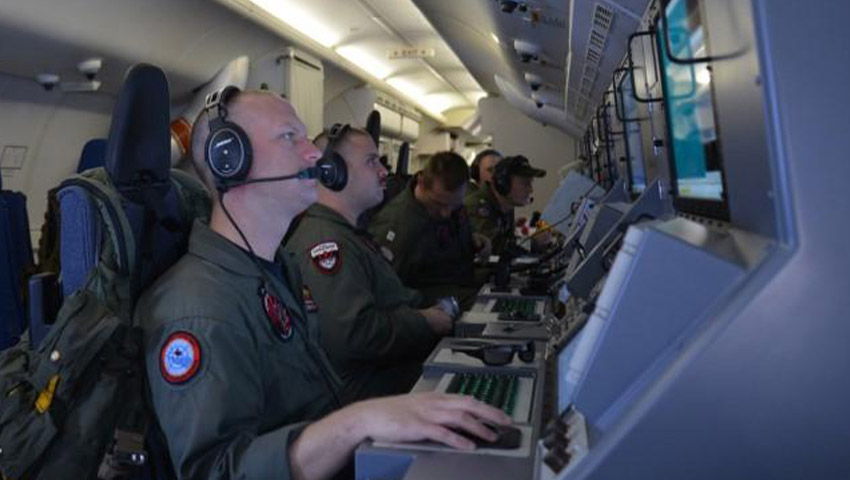The US Navy has awarded Boeing a US$34.5 million contract to provide the equipment and kits to add a sixth mission crew workstation to previously delivered US Navy and Royal Australian Air Force P-8As, a total of 60 aircraft.
To continue reading the rest of this article, please log in.
Create free account to get unlimited news articles and more!
On any given day, a P-8A Poseidon crew can be searching for submarines, monitoring surface ships or participating in search and rescue operations around the globe. The ability to perform such versatile missions is due largely to the mission crew workstations on board the aircraft.
P-8A aircraft currently are delivered with five workstations, all composed of state-of-the-art dual monitors (including a touch screen) that can collect and report on data from sensors, sonobuoys, radar and an electro-optical/infrared camera.
These powerful data-crunching systems can support all of the various crew roles so that any station can serve any purpose as required to meet the mission. That already makes the P-8A a formidable intelligence, surveillance and reconnaissance aircraft, program leaders said. Now it will become even more capable.
Fred Bruner, P-8 program manager, explained that more operators means more functions can be performed, more functions means more data collected, and more data means increased mission effectiveness.
"Our ability to continue to enhance the P-8’s capabilities is really a reflection of our commitment to give our customers the product they need, when they need it," Bruner said.
The retrofit also brings existing fleet aircraft up to the same crew configuration as on recent production aircraft, including the four aircraft to be delivered to the New Zealand Air Force, which already include a sixth workstation.
Bruner added, "By using this kind of evolutionary approach, we’ve been able to get the aircraft out there, performing at an incredibly high level, and now will add even more capability to support missions around the world."
The P-8A Poseidon is designed for long-range anti-submarine warfare; anti-surface warfare; and intelligence, surveillance and reconnaissance missions. It is capable of broad-area maritime and littoral operations. It is also effective for humanitarian and search and rescue missions.
The aircraft has advanced sensors and mission systems, including a state-of-the-art multi-role radar, high definition cameras, and an acoustic system with four times the processing capacity of the AP-3C Orions.
The P-8A is built specifically as a military aircraft. It is based on the proven commercial designs of Boeing's 737-800 fuselage, but has been substantially modified to include:
- A weapons bay;
- Under wing and under fuselage hard points for weapons; and
- Increased strengthening for low level (down to 200 feet) operations and high angle turns.
A derivative of the 737-800 Next Generation, the P-8 combines superior performance and reliability with an advanced mission system that ensures maximum inter-operability in the future battlespace.
The P-8A aircraft has an extensive communications system including radios and data links across VHF, UHF, HF and SATCOM. An internal fuel capacity of almost 34 tonnes allows the P-8A to conduct low level anti-submarine warfare missions at a distance of greater than 2,000 kilometres from base. The P-8A will be compatible for air-to-air refuelling with the KC-30A MRTT.
Australia has committed to purchasing 12 P-8A Poseidon aircraft, which will replace the ageing fleet of P-3C Orion aircraft. Australia's first aircraft arrived in Canberra on 16 November 2016, with the remaining 11 aircraft to be delivered by March 2020. IOC for the first eight P-8As is scheduled for the period 2017-2020.

 Login
Login







